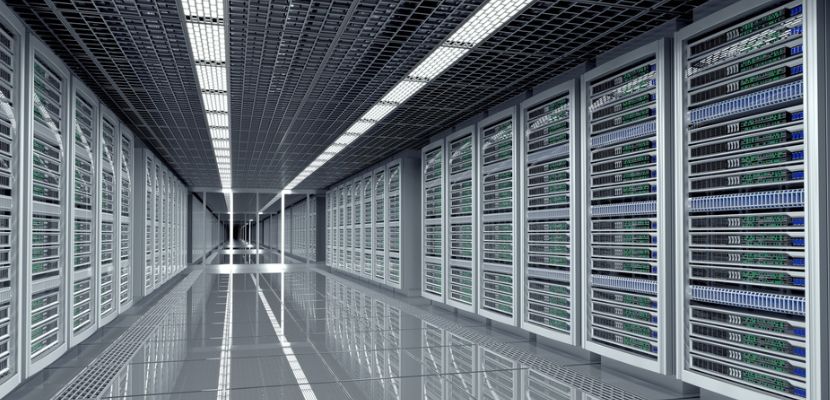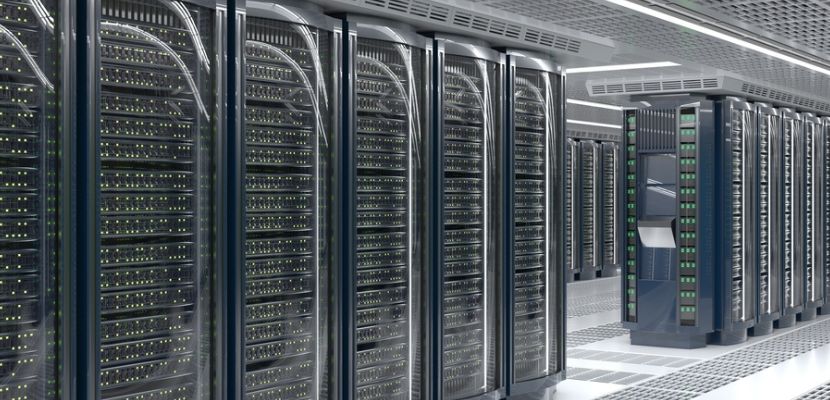Data Center Infrastructure Management (DCIM) refers to the integrated management of a data center's physical and IT resources. It combines hardware, software, and processes to monitor, measure, and optimize the use of energy, space, and equipment within the data center.

What Is Data Center Infrastructure Management?
Data center infrastructure management (DCIM) is a comprehensive approach that encompasses the monitoring, management, and optimization of both the physical and IT resources within a data center. It involves the integration of various systems and tools to provide a holistic view of the data center's operations, including power usage, cooling, space utilization, and the performance of IT equipment.
By continuously collecting and analyzing data from these various components, DCIM enables data center operators to make informed decisions that enhance efficiency, reduce operational costs, and maintain the reliability and uptime of critical infrastructure. This management approach also supports capacity planning, asset tracking, and predictive maintenance, ensuring that the data center can adapt to evolving demands while maintaining optimal performance.
DCIM Goals
DCIM has several key goals aimed at optimizing the performance and efficiency of a data center. These goals include:
- Enhanced resource utilization. The primary goal of DCIM is to optimize the use of data center resources, including power, cooling, space, and IT assets. By monitoring and managing these resources, DCIM ensures that they are used efficiently, reducing waste and maximizing the capacity of the data center without the need for costly expansions.
- Improved operational efficiency. DCIM aims to streamline data center operations by automating routine tasks, providing real-time monitoring, and offering advanced analytics. This reduces manual intervention, minimizes human errors, and allows data center staff to focus on strategic activities that add value to the organization.
- Cost reduction. By optimizing resource utilization and improving operational efficiency, DCIM helps lower the overall costs associated with running a data center. This includes reducing energy consumption, minimizing downtime, and extending the lifespan of data center equipment through proactive maintenance and better capacity management.
- Increased reliability and uptime. A critical goal of DCIM is to ensure the continuous operation of the data center by preventing downtime and failures. Through real-time monitoring, predictive analytics, and proactive maintenance, DCIM helps identify potential issues before they lead to outages, thereby improving the reliability and availability of critical infrastructure.
- Scalability and flexibility. DCIM enables data centers to adapt to changing business needs by supporting scalable and flexible infrastructure management. This includes the ability to quickly deploy new resources, reconfigure existing assets, and manage the increased complexity that comes with growth, all while maintaining optimal performance and efficiency.
- Enhanced visibility and control. One of the goals of DCIM is to provide comprehensive visibility into the data center's physical and IT infrastructure. This includes real-time data on power usage, environmental conditions, and asset performance. Enhanced visibility allows data center operators to have greater control over their environment, enabling more informed decision-making and better risk management.
- Sustainability and environmental impact. DCIM also focuses on reducing the environmental impact of data center operations by improving energy efficiency and supporting initiatives like green IT. This includes minimizing the carbon footprint of the data center through optimized energy usage and better cooling strategies, contributing to the organization's sustainability goals.
- Regulatory compliance and reporting. Many data centers are subject to regulatory requirements related to energy efficiency, data protection, and environmental impact. DCIM helps organizations meet these compliance requirements by providing accurate reporting, tracking, and documentation of key metrics, ensuring that the data center adheres to relevant standards and regulations.
DCIM Components
DCIM comprises several key components, each serving a critical role in the overall management and optimization of data center operations:
- Power management. This component focuses on monitoring and managing the power distribution within the data center. It tracks power consumption at various levels, from the facility's overall usage down to individual servers. Power management tools help ensure that energy is used efficiently, reducing waste and enabling operators to plan for future power needs effectively. This component often includes capabilities for monitoring uninterruptible power supplies (UPS), generators, and power distribution units (PDUs).
- Environmental monitoring. Environmental monitoring involves tracking various conditions within the data center, such as temperature, humidity, airflow, and cooling efficiency. Sensors placed throughout the data center collect data, which is then analyzed to ensure that the facility remains within optimal operating conditions. Proper environmental monitoring helps prevent overheating, equipment failure, and energy inefficiency.
- Asset management. Asset management in DCIM involves keeping a detailed inventory of all physical and virtual assets within the data center. This includes tracking the location, status, and configuration of servers, storage devices, networking equipment, and other hardware. Asset management tools help operators optimize the use of resources, plan for capacity, and manage the lifecycle of equipment from deployment to decommissioning.
- Capacity planning. Capacity planning tools within DCIM assist data center managers in predicting future resource needs based on current usage trends and business growth projections. This component helps ensure that the data center can scale efficiently, avoiding over-provisioning or under-provisioning of resources. By analyzing historical data and modeling future scenarios, capacity planning enables informed decision-making regarding infrastructure expansion or consolidation.
- Change management. Change management within DCIM is concerned with tracking and controlling changes to the data center's infrastructure. This includes recording updates, maintenance activities, and configuration changes to both physical and virtual assets. Effective change management helps minimize the risk of downtime and ensures that any modifications are documented and aligned with operational goals.
- Integration with ITSM (IT service management). DCIM often integrates with IT service management systems to provide a more cohesive approach to managing the data center's IT services. This integration allows for better coordination between IT operations and facilities management, ensuring that changes and incidents are managed efficiently across all layers of the data center infrastructure.
- Visualization and reporting. Visualization and reporting tools within DCIM provide data center operators with real-time and historical insights into the performance and status of the infrastructure. These tools often include dashboards, heat maps, and other visual representations that help operators quickly identify issues, analyze trends, and generate reports for stakeholders. Effective visualization aids in decision-making by presenting complex data in an easily interpretable format.
How Does DCIM Work?
Data center infrastructure management works by integrating various systems and tools to provide a comprehensive view of the data center's physical and IT infrastructure. Here's how it functions:
- Data collection. DCIM systems continuously collect data from various sensors, devices, and systems within the data center. This includes information on power usage, temperature, humidity, cooling efficiency, server performance, network traffic, and the status of various hardware components. The data is gathered from sources like power distribution units (PDUs), environmental sensors, servers, network switches, and cooling systems.
- Data aggregation and analysis. Once the data is collected, it is aggregated into a central database where it can be processed and analyzed. DCIM software uses this data to create a comprehensive picture of the data center’s operational state. Advanced analytics tools within the DCIM system identify patterns, detect anomalies, and provide insights into the overall efficiency and health of the infrastructure.
- Visualization. The analyzed data is then presented through a series of dashboards, heat maps, and other visualization tools. These visual representations allow data center managers to quickly assess the status of the infrastructure, identify potential issues, and monitor trends over time. Visualization tools also provide real-time updates, enabling operators to respond quickly to changing conditions.
- Monitoring and alerts. DCIM continuously monitors the data center's infrastructure in real time. When certain thresholds or predefined conditions are met—such as temperature exceeding safe limits or a sudden spike in power consumption—the system triggers alerts. Alerts are sent via email, SMS, or through the DCIM dashboard, allowing operators to take immediate action to prevent potential problems.
- Capacity planning and optimization. DCIM tools help with capacity planning by analyzing current resource usage and predicting future needs. This enables data center operators to optimize the deployment of resources, avoid over-provisioning or under-utilization, and plan for future expansions.
- Change management. As part of its functionality, DCIM tracks all changes made to the data center’s infrastructure, including the addition or removal of equipment, configuration changes, and maintenance activities. This helps maintain an accurate record of the data center’s state and ensures that changes do not negatively impact performance or availability.
- Integration with other systems. DCIM often integrates with other IT and facilities management systems, such as IT service management (ITSM) tools, building management systems (BMS), and network management tools. This integration ensures that all aspects of the infrastructure are aligned and working together efficiently.
- Reporting. Finally, DCIM generates detailed reports on various aspects of the data center’s operations. Reports are used for regulatory compliance, performance assessment, and strategic planning. They provide stakeholders with a clear understanding of the data center’s efficiency, costs, and overall health.
DCIM Benefits

DCIM offers a range of benefits that enhance the efficiency, reliability, and management of data centers. Here’s a detailed explanation of these benefits:
- Integration with IT and facility management systems. DCIM often integrates with other management systems, such as IT service management (ITSM) and building management systems (BMS), creating a unified approach to managing both IT and facility infrastructure.
- Improved energy efficiency. DCIM tools help monitor and optimize energy consumption within the data center. By providing real-time insights into power usage, these tools enable operators to identify areas of energy waste and implement strategies to reduce consumption, such as optimizing cooling systems or balancing workloads.
- Enhanced resource utilization. DCIM allows for better management of data center resources, including space, power, and cooling. By tracking the usage of these resources, DCIM helps data center managers optimize the deployment of IT equipment, ensuring that resources are used efficiently and avoiding the over-provisioning or under-utilization of infrastructure.
- Increased uptime and reliability. DCIM helps prevent downtime by identifying potential issues before they become critical. For example, if a server is overheating or a power supply is failing, DCIM alerts operators to take corrective action before it impacts data center operations. This proactive approach reduces the risk of outages and improves overall reliability.
- Better capacity planning. DCIM tools enable data center managers to forecast future resource needs based on current usage trends and business growth. This helps in planning for infrastructure expansion or consolidation, ensuring that the data center can scale efficiently without running into capacity constraints. Effective capacity planning also helps in avoiding unnecessary capital expenditures.
- Streamlined change management. DCIM provides a centralized platform for keeping records of equipment additions, configuration changes, and maintenance activities. With this kind of oversight, data center managers can ensure that changes are implemented smoothly and that any potential risks associated with changes are mitigated.
- Improved asset management. DCIM offers comprehensive asset management capabilities, allowing data center operators to maintain an accurate inventory of all physical and virtual assets. This includes tracking the location, status, and lifecycle of each asset, which helps to optimize asset utilization, plan for equipment upgrades or replacements, and reduce the risk of asset loss or misplacement.
- Enhanced compliance and reporting. Many industries require data centers to comply with specific regulatory standards regarding data security, energy use, and environmental impact. DCIM simplifies compliance by providing detailed reports and audit trails that document the data center’s operations.
- Cost savings. By improving energy efficiency, optimizing resource utilization, and reducing downtime, DCIM contributes to significant cost savings for data centers. The ability to avoid unnecessary expenditures on power, cooling, and infrastructure, as well as reducing the costs associated with outages, makes DCIM a valuable investment.
- Real-time visibility and control. DCIM provides a real-time view of the entire data center environment, allowing operators to monitor critical systems continuously. This visibility enables quick response to issues and provides the control needed to make immediate adjustments to maintain optimal operating conditions.